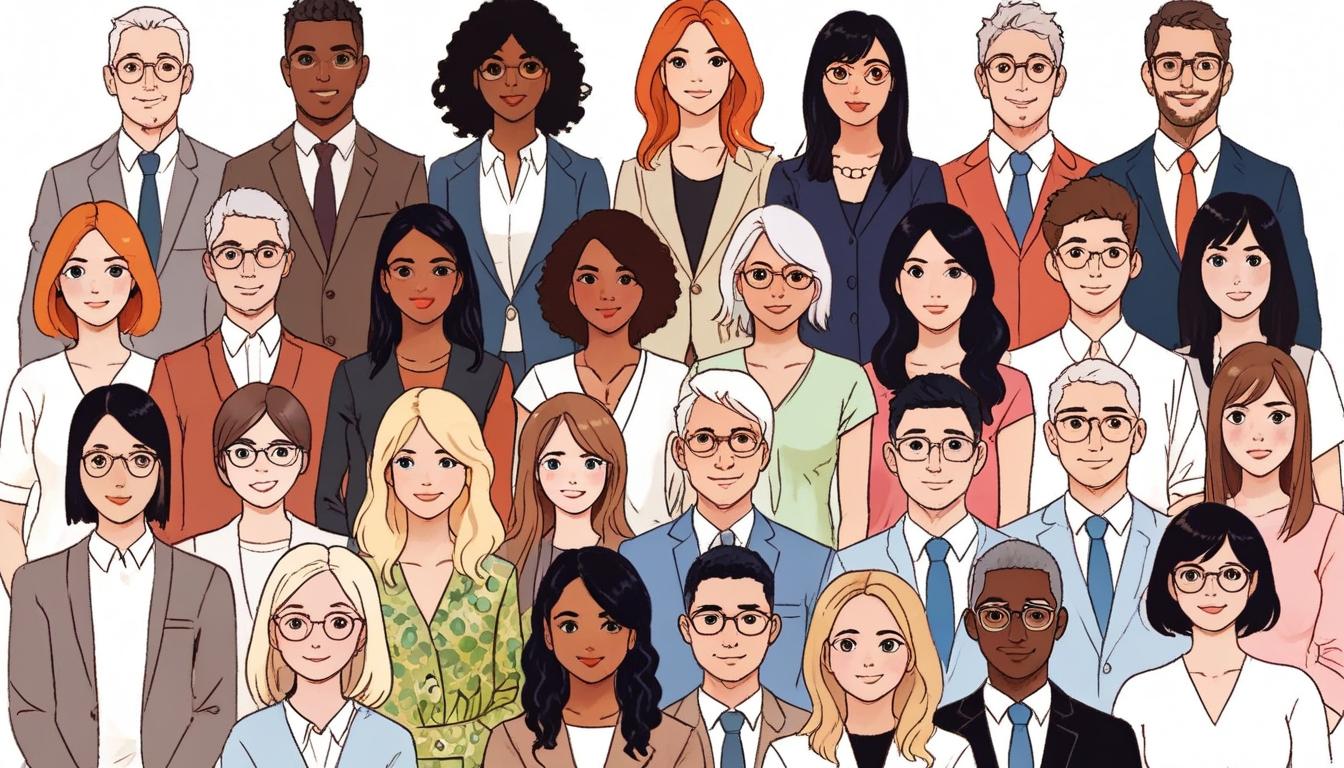Google’s Pixel Studio AI image generator, featured on the Pixel 9a, has come under fire for producing images that reinforce narrow and harmful stereotypes of success and beauty, revealing persistent biases within AI and raising urgent calls for more inclusive technology development.
During the burgeoning era of artificial intelligence, innovations can sometimes reveal unexpected and troubling consequences. The Google Pixel 9a, equipped with the AI image generation tool Pixel Studio, has prompted concern as its output reinforces harmful stereotypes regarding success, beauty, and identity.
Pixel Studio allows users to create images based on text prompts, with initial safeguards against generating depictions of people. However, Google subsequently removed these limitations, allegedly to enrich the user experience. The results, however, have echoed a narrow, conventional view of success as embodied by a specific demographic: young, white, able-bodied men dressed in expensive suits. This portrayal reflects deeply entrenched societal biases that can perpetuate discrimination in real life.
For instance, after repeated attempts to generate images deemed representative of “a successful person,” results exhibited a glaring absence of diversity—showing predominantly young, white males, with the few women depicted primarily conforming to conventional beauty standards. This pattern is not an anomaly limited to Pixel Studio but reflective of broader trends in AI image generation, as seen in related projects, such as AI-generated beauty contests which often uphold conventional ideals and underrepresented voices.
Critics have pointed out that such AI capabilities are essentially mirrors, reflecting societal biases rather than challenging them. The data fed into these systems largely originates from an internet rife with stereotypes, exposing a lack of intent to curate training datasets that capture a more nuanced, equitable vision of humanity. The mechanisms of machine learning inherently lean towards pattern recognition, which, when applied to human attributes, can easily evolve into reductive caricatures rather than recognitions of individual complexity.
Recent developments in other AI-related domains underscore the challenges tech companies face when it comes to managing algorithmic bias. Political pressures, mixed with rapid advancements in AI capabilities, contribute to a delicate balancing act. Initiatives aimed at fostering fairness in AI have faced setbacks, with reports indicating ongoing scrutiny of large tech firms regarding their commitment to responsible AI development.
The societal implications of these AI-generated outputs extend beyond mere representation. Stereotyping, by its very nature, reinforces harmful narratives, leading to real-world consequences such as discrimination in hiring practices, wage disparity, and diminished opportunities for marginalized groups. As evident in other critiques of AI-generated images of women, these tools can not only set unrealistic standards but also exacerbate societal attitudes that idealize specific body types and appearances while marginalising others.
Amidst this conversation, Google’s Pixel Studio faced scrutiny for its problematic outputs, leading to an apology from the company after controversy swirled around its AI image generator. This backlash highlights an urgent need for developers to address inherent biases in AI tools proactively, rather than merely reacting to public criticism.
As users engage with such technologies, it becomes increasingly crucial for individuals and corporations alike to reflect on the biases encoded within AI systems. By allowing our subjective experiences to dictate what constitutes a “successful person” or “beautiful woman,” we perpetuate harmful cycles—fostering a digital ethos that strays further from the inclusive representation the multifaceted nature of humanity demands.
In light of this, many are calling for a reevaluation of the algorithms underlying these AI tools, in hope of cultivating a generation of AI that accurately reflects the rich diversity of human experience. As we forge ahead, the imperative to confront these ingrained stereotypes and advocate for responsible AI that champions inclusivity remains a daunting but essential endeavour.
Reference Map
- Paragraphs 1, 3, 4, 6, 7, 8
- Paragraphs 2, 5, 6
- Paragraphs 3, 8
- Paragraphs 4, 8
- Paragraph 5
- Paragraph 6
- Paragraphs 2, 8
Source: Noah Wire Services
- https://www.techradar.com/computing/artificial-intelligence/i-asked-the-google-pixel-9a-to-make-an-image-of-a-successful-person-and-the-results-were-depressingly-predictable – Please view link – unable to able to access data
- https://www.apnews.com/article/8302e12dd74df69a1adc6565710f033d – This article discusses the challenges tech companies face in reducing algorithmic bias in AI, highlighting political pressures and the potential stifling of fairness initiatives. It mentions subpoenas issued to major tech firms and the removal of ‘responsible AI’ references by the U.S. Commerce Department, raising concerns about the future of equitable AI development.
- https://time.com/6993650/ai-generated-women-miss-ai-beauty-pageant-contestants/ – The piece examines the ‘Miss AI’ beauty pageant, featuring AI-generated women, and the controversy surrounding it. It explores how the pageant may perpetuate conventional beauty standards and biases, with opinions divided on whether it celebrates digital artistry or reinforces harmful stereotypes.
- https://www.lemonde.fr/en/opinion/article/2024/06/11/the-way-ai-uses-images-to-define-a-beautiful-woman-can-wreak-havoc_6674443_23.html – This article analyzes AI-generated images of ‘beautiful women’ from tools like Midjourney, Stable Diffusion, and DALL-E, revealing a narrow definition of beauty. It discusses how this virtual standard exacerbates stereotypes and the societal tendency to idealize specific body types and appearances.
- https://apnews.com/article/c7e14de837aa65dd84f6e7ed6cfc4f4b – The article covers Google’s apology for its AI image-generator tool’s problematic launch, which aimed to create diverse images but sometimes ‘overcompensated’ by including people of color in historically inaccurate settings, leading to temporary removal of the feature from its Gemini chatbot.
- https://time.com/6189865/online-safety-ai-image-tools/ – This piece discusses the rise of AI image generation apps like DALL-E Mini and the associated safety concerns. It highlights the challenges of moderating content to prevent misuse, emphasizing the need for responsible AI development and ethical considerations to address potential dangers such as bullying and misinformation.
- https://www.axios.com/2024/02/23/google-gemini-images-stereotypes-controversy – The article reports on Google’s pause of its Gemini AI tool for generating images of humans following criticisms over its production of controversial images, such as Black founding fathers and a female pope, highlighting ongoing issues AI developers face with avoiding biases in generative AI outputs.
Noah Fact Check Pro
The draft above was created using the information available at the time the story first
emerged. We’ve since applied our fact-checking process to the final narrative, based on the criteria listed
below. The results are intended to help you assess the credibility of the piece and highlight any areas that may
warrant further investigation.
Freshness check
Score:
8
Notes:
The narrative discusses recent events related to Pixel Studio and Google Pixel 9a, including a controversy and apology from Google, indicating it addresses current or near-current issues. There are no indications of outdated references such as deprecated roles or obsolete technology. However, some discussion of ‘recent developments’ and ‘ongoing scrutiny’ is general rather than dated. The content does not appear recycled from old press releases or dated material, supporting a high freshness rating.
Quotes check
Score:
10
Notes:
No direct quotes attributed to individuals are present in the narrative; it primarily summarises observations and criticisms about Google Pixel Studio and AI bias. Since no explicit quotations are found or sourced, the score is high as this may represent original reporting or synthesis rather than repeated quoting.
Source reliability
Score:
8
Notes:
The narrative originates from TechRadar, a widely known technology news and review platform generally considered reliable for technology-related reporting. While not at the level of primary academic or journalistic institutions like Reuters or BBC, TechRadar is commonly regarded as credible in its domain with professional editorial standards.
Plausability check
Score:
9
Notes:
The claims about AI bias in image generation and societal stereotypes reflected in Google Pixel Studio’s outputs align with well-documented issues in AI ethics and machine learning biases. The reported apology from Google supports plausibility. No extraordinary or unverifiable claims are made; the story fits known patterns of AI bias challenges and corporate responses.
Overall assessment
Verdict (FAIL, OPEN, PASS): PASS
Confidence (LOW, MEDIUM, HIGH): HIGH
Summary:
The narrative is timely and relevant to ongoing discussions about AI bias in image generation, with no evidence of being outdated or recycled. It lacks direct quotes, suggesting original reporting or synthesis. The source is credible within technology journalism, and the claims are plausible and consistent with known AI ethical challenges. Overall, the content is reliable and current.













